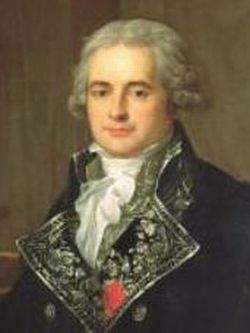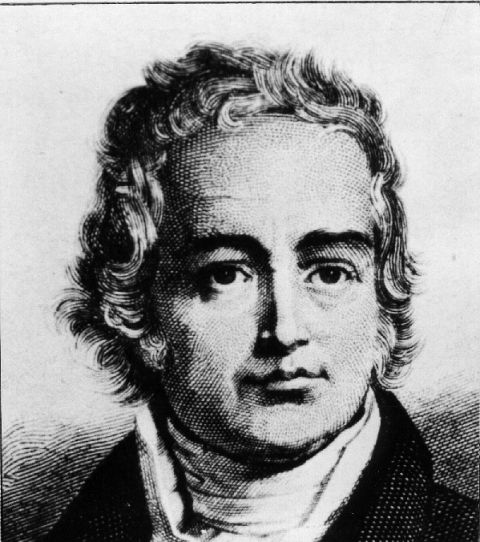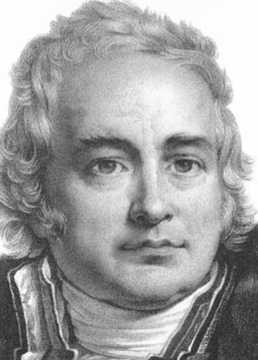Jean-Antoine Chaptal
Jean -Antoine Chaptal, Comte de Chanteloup ( born June 3, 1756 in Nojaret, Badaroux, Lozère, † 30 July 1832 in Paris) was a French chemist and politician.
Teaching
Chaptal, son of a pharmacist, studied chemistry in Montpellier until 1777. In 1777, he received his doctorate in chemistry, before he went to Paris to teach there. In 1781 he was sent to the chair of chemistry at the Faculty of Medicine of Montpellier, Languedoc, called, where he taught the theories of Lavoisier. The method of dry sugaring of wine ( Chaptalisation ) prior to obtaining a higher alcohol content by adding sugar to grape juice or must or during fermentation bears his name. In 1790 he gave the previously discovered nitrogen the element name Nitrogen ( = Salpeterbildner ), of which the element symbol used today derives N for nitrogen. He stepped from July 1807 to the Société d' Arcueil learned society added.
Economic activity
The capital that fell to him through the death of a rich uncle, he was in the construction of a chemical plant for the production of mineral acids, alum, white lead, soda and other substances. His reputation is based particularly on the practical applications, he has stated in particular the optimization of the production of hydrochloric acid.
His practical work has been favorably noticed by the French government. It gave him the peerage and the ribbon of the Order of Saint Michel. During the French Revolution he was arrested because of the release of the game Dialogue entre un et un montagnard girondin. However, he was quickly released again through the intervention of his friends. In 1793 he took over the management of the saltpeter works of Grenelle. Between 1794 and 1797 he worked again in Montpellier and then went to Paris.
Chaptal developed his theorems to produce wine of 1799. He wrote the section of the wine farming dictionary by François Rozier. Scientists such as Cadet -de- Vaux and Jean -Louis Roard published his new doctrine with their specific observations. The wine continued his research results to immediately. Chaptal revolutionized the oenology and summed up his principles in 1807 in a book together.
The first chamber of commerce in today's Germany was founded in 1803 in Mainz on Chaptal's decision of 3 Nivôse of the year IX (23 December 1802) as a Chambre de Commerce.
Political activity
After the coup of 18 Brumaire he was appointed by the First Consul Napoleon Bonaparte to the consul of the country, and was followed on January 21, 1801 Lucien Bonaparte as Minister of the Interior after. This was the beginning of a complete reorganization of the public administration. He set up a chemical factory near Paris, an art school and an industry association. He reorganized the hospitals. Outstanding is the creation of a midwifery school, the school l'Hospice de la Gynaecology de Paris in 1802. The Chaptal decree the redistribution of Napoleon looted art has been resolved.
He introduced the metric system for weights and measures, and promoted the arts as sciences. Napoleon awarded him the title of Comte de Chanteloup, and the Grand Cross of the Legion of Honour. Chaptal resigned in 1804, when Bonaparte was to elect the emperor in order to devote himself to his scientific work. As of July 1807, he is a member of the Société d' Arcueil scientific community to the chemist Claude Louis Berthollet ( 1748-1822 ), among others, Alexander von Humboldt (1769-1859) was a member.
After Napoleon's return from Elba, Chaptal was labor and trade minister, but was forced to retreat into private life when the emperor was forced to abdicate. His name was removed from the list until 1819 the friends of France. Nevertheless Chaptal in 1816 by Louis XVIII. nominated member of the Academy of Sciences. Chaptal's merit science was to popularize and apply the discoveries of chemistry in industry and agriculture practicable.
Ruined by the debts of his sons, he sold his property in 1823 and died on 30 July 1832 in poverty.
Works
- Elemens de Chemistry more ( 3 issues in 1790; renewed: 1796-1803 ) (online ) Chemical elements
- Traité du salpêtre et des goudrons (1796 ) discussion of nitric and the tars
- Tableau of principaux sels terreux (1798 ) Table of Haupterdsalze
- Essai sur le perfectionnement chimiques des arts en France (1800 ) ( online) attempt to perfect the chemical arts in France
- Art de faire de gouverner, et les vins de perfectionner ( first edition 1801, 2nd edition 1819) The art of making wines to control the winemaking and improve
- Traité sur la pratique et théorsque culture de la vigne, & c. ( First edition 1801, 2nd edition 1811) Theoretical and practical treatise on the culture of the vine with the art, the wine, the booze, brandy, vinegar (online) - simple and compound - to prepare.
- Essai sur le blanchiment (1801 ) (online ) tests ( laundry ) Bleach (1801 )
- La Chimie appliquée aux arts (4 editions, 1806) (online) The chemistry applied to the arts
- Art de la peinture du coton en rouge (1807 ) ( online) art of coloring of red cotton
- Art du peinturier et du digraisseur (1800)
- De l'industrie française ( 2 issues, 1819) (online) From the French industry
- Chimie appliquée à l'Agriculture ( First edition 1823, 2nd edition 1829) (online) Applied Agricultural Chemistry. It is the last published work of Chaptal. In this newly printed treatise of classical agronomy, he turns first to the numerous chemical discoveries to practical, scientific and technical agriculture. Important discussions on the composition of the soil, on the fertilizer, the air temperature, the role of water, the influence of electricity on vegetation, the role of light and soil temperature.



,_comte_de_Chanteloup.jpg)





